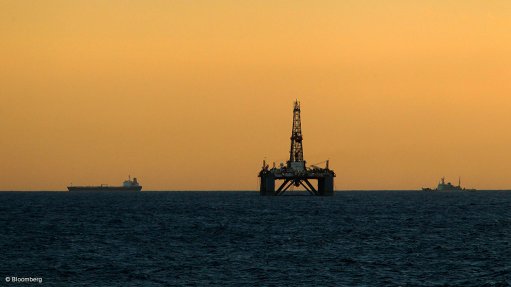
Photo by: Bloomberg
JOHANNESBURG (miningweekly.com) – With rising global demand for oil and gas, particularly from Asia, Western Australia’s current multibillion-dollar industry could be “dwarfed” by the potential opportunities emerging for the continent, Mines and Petroleum Minister Bill Marmion said.
Delivering the opening address for the 2014 Australasian Oil and Gas Exhibition and Conference, he said that Western Australia’s petroleum sales increased by an average of 9% each year over the past decade.
“[During the] last financial year, petroleum sales reached $24.5-billion - the second-most valuable sector in Western Australia, behind only iron-ore,” he pointed out.
Western Australia, which accounted for 65% of Australia’s conventional natural gas and 73% of crude oil and condensate production, currently had $135-billion in resource projects under construction or committed – $90-billion of which were oil and gas projects.
“But as considerable as the state’s offshore liquefied natural gas (LNG) resources are, there is even more potential onshore,” he said, stating that Western Australia had an estimated 280-trillion cubic feet of recoverable natural gas from shale and tight rock – more than double Western Australia’s known offshore reserves.
“If even a moderate percentage of these estimates are proven, our onshore gas resources present a remarkable opportunity for Western Australia,” Marmion said.
The growth of the oil and gas sector was driven by ever-increasing global demand for energy and gas was likely to overtake coal as the dominant global energy source by 2035.
Asia would drive 65% of the global energy growth until 2035, with China and India alone building almost 40% of the world’s new power generation capacity.
“From Japan and South Korea, to Thailand and India, the demand for natural gas is expected to significantly increase,” Marmion said.
Further, Chinese gas consumption was expected to jump 167% over the next decade, as the country increases the amount of electricity generated by natural gas from 5% of its total electricity generation, to 8% to 10% by 2015 and to 12% to 15% by 2020.
By 2015, China’s LNG import capacity was expected to reach 47-million tonnes a year.
“China is already Western Australia’s second-largest market for petroleum exports after Japan … [and] with our close proximity to key Asian markets, our large reserves of gas and historically reliable supply, Western Australia is ideally placed to take advantage of this growth,” he explained.
However, the continent’s proximity to Asia was “not enough to ensure Australia was able to embrace the next wave of LNG investment”, with Australia required to mitigate escalating costs of oil and gas projects and community concerns that could lead to increasing red and green tape.
“We need to focus on ensuring we are cost-competitive in a global market,” he said, committing the Western Australian state government to “do everything within its powers” to drive down cost pressures.
“Personally, I am overwhelmingly optimistic about the future of Western Australia’s oil and gas sector and the opportunity it presents. Yes, there are challenges, but these are challenges that can be overcome,” he concluded.